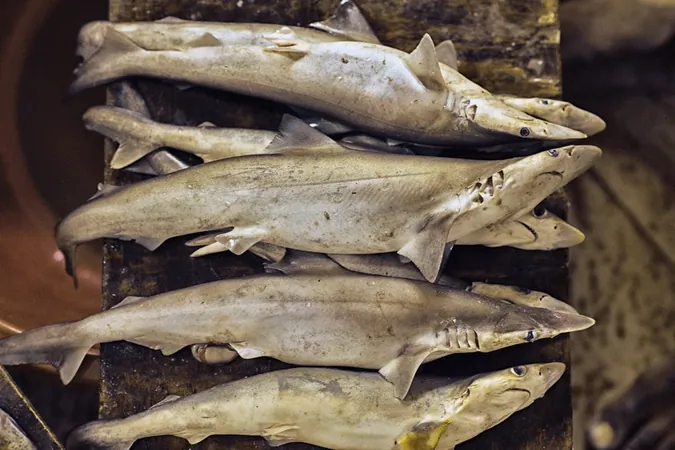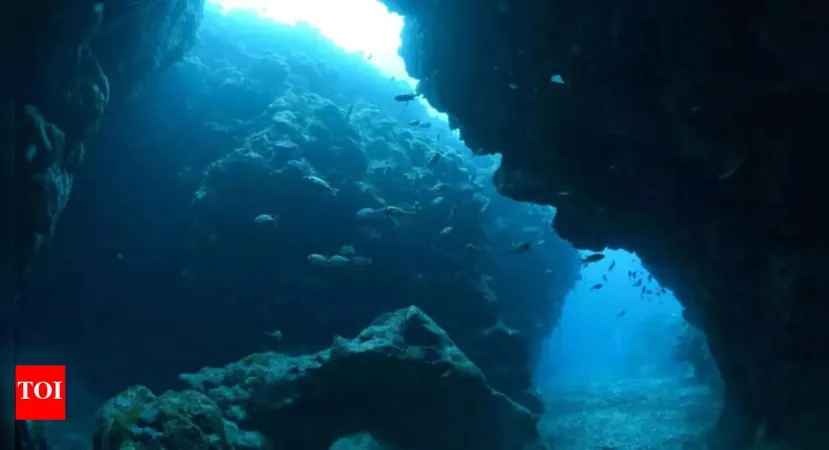
Shark Survival at Risk: The Alarming Impact of Microplastics on Reproduction
2025-05-01
Author: Emily
Sharks are vital to the ocean’s ecosystem, acting as top predators that help regulate the populations of their prey and sustain marine food webs. However, their survival faces significant threats, including overfishing and habitat degradation, not to mention the alarming rise of pollution from microplastics.
In the past 50 years, the global populations of sharks and rays have plummeted by a staggering 71%. While overfishing plays a major role, another insidious threat is surfacing: microplastics—tiny plastic fragments less than 5 mm in size that originate from the breakdown of larger plastic debris.
A groundbreaking study conducted on spadenose sharks (Scoliodon laticaudus) along the west coast of India sheds light on the serious impact of these pollutants. These small, coastal sharks are particularly vulnerable due to their shallow water habitats and are now found to be contaminated with microplastics.
Led by PhD student Haradhan Ruidas from the Indian Institute of Science Education and Research, the research team investigated the gastrointestinal and gonadal tissues of these sharks. Their goal was to assess the concentration of microplastics and understand how they might affect the reproductive health of this already endangered species.
The findings were shocking, revealing microplastics in every water sample collected, along with 97.9% of gastrointestinal samples and a staggering 95% of gonadal tissues. The surprising twist? The highest concentrations were found in the reproductive organs, not just in the digestive system.
What compounds this distressing situation is the significant difference in microplastic concentrations between male and female sharks. Female spadenose sharks exhibited higher levels in their gonads, while in males, increased microplastics correlated with decreased reproductive health.
The mechanism behind these disturbing trends requires further examination. However, earlier studies suggest microplastics can enter the bloodstream, lead to inflammation, disrupt hormone production, and impair reproductive cell development. Research has already linked microplastics to reduced testosterone and fertility issues in both lab and marine animals.
In a twist of fate, the use of Raman spectroscopy confirmed that the microplastics inhabiting the sharks were primarily made of polyethylene and polyamide, common materials found in textiles and packaging. As apex predators, sharks may accumulate these pollutants over time, exacerbating their reproductive struggles and threatening their already slow recovery rates.
When top predators like sharks begin to falter, it’s a warning signal for the ocean as a whole. Understanding how pollution affects sharks isn't just about their survival—it's a telling sign of the overall health of marine ecosystems. The toxic legacy of today’s pollution may jeopardize future generations before they even have a chance to thrive.









 Brasil (PT)
Brasil (PT)
 Canada (EN)
Canada (EN)
 Chile (ES)
Chile (ES)
 Česko (CS)
Česko (CS)
 대한민국 (KO)
대한민국 (KO)
 España (ES)
España (ES)
 France (FR)
France (FR)
 Hong Kong (EN)
Hong Kong (EN)
 Italia (IT)
Italia (IT)
 日本 (JA)
日本 (JA)
 Magyarország (HU)
Magyarország (HU)
 Norge (NO)
Norge (NO)
 Polska (PL)
Polska (PL)
 Schweiz (DE)
Schweiz (DE)
 Singapore (EN)
Singapore (EN)
 Sverige (SV)
Sverige (SV)
 Suomi (FI)
Suomi (FI)
 Türkiye (TR)
Türkiye (TR)
 الإمارات العربية المتحدة (AR)
الإمارات العربية المتحدة (AR)